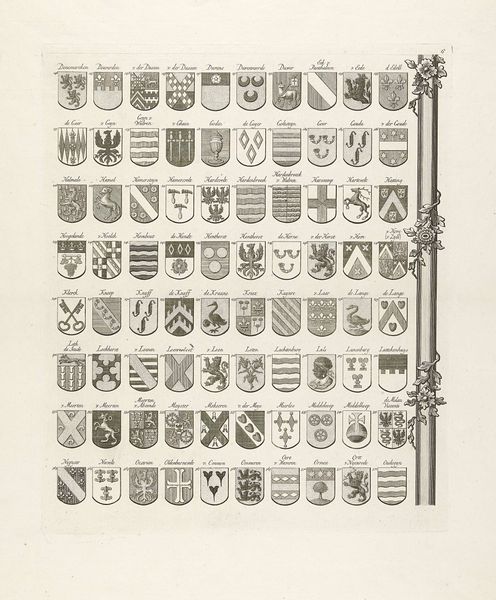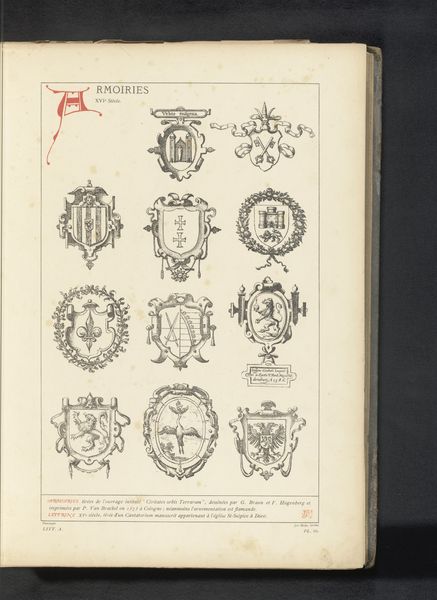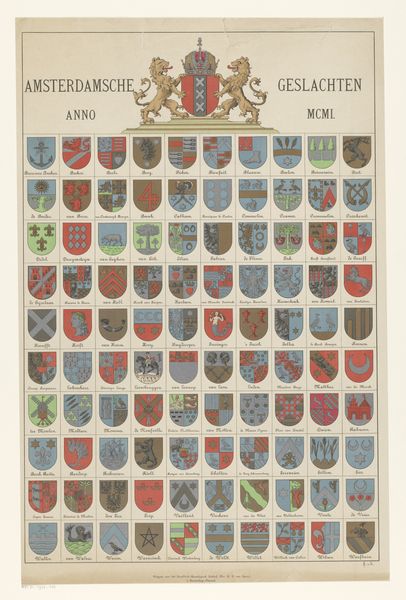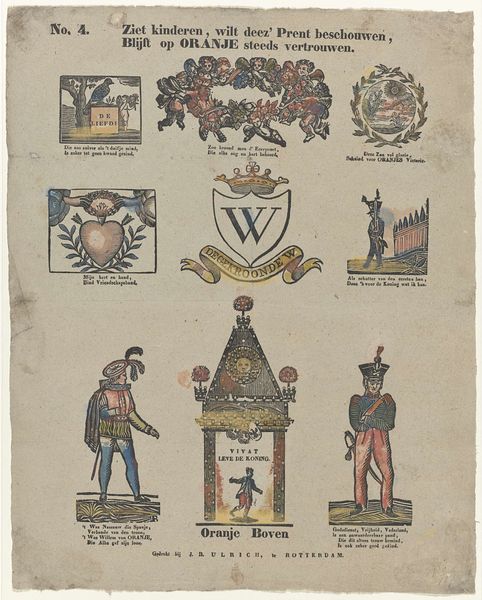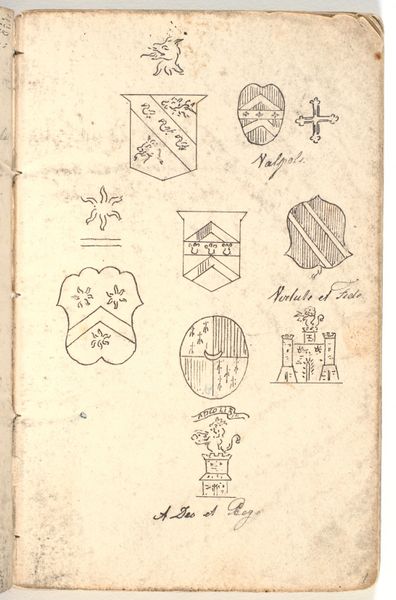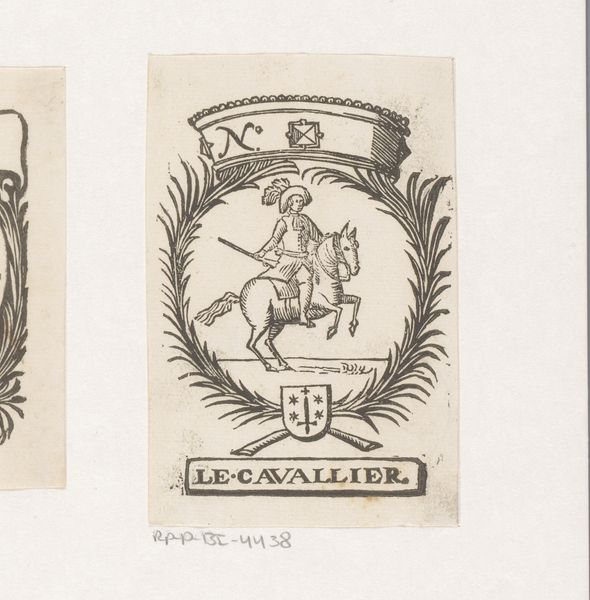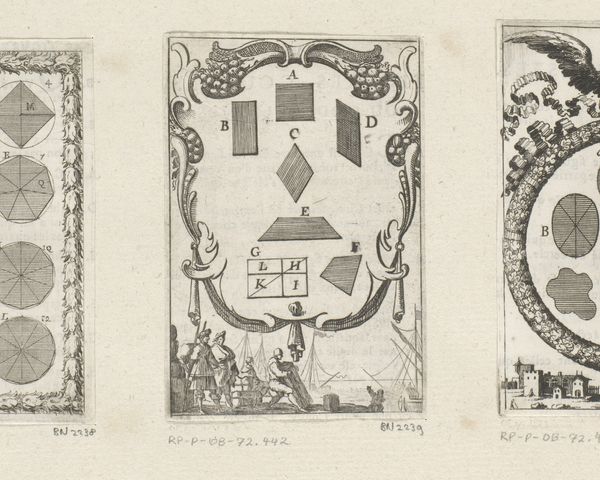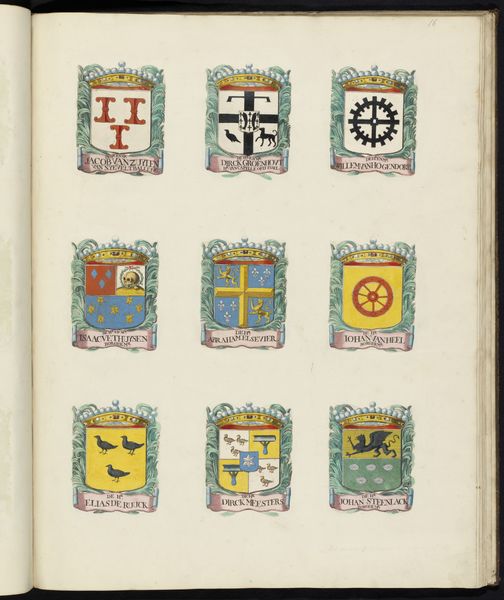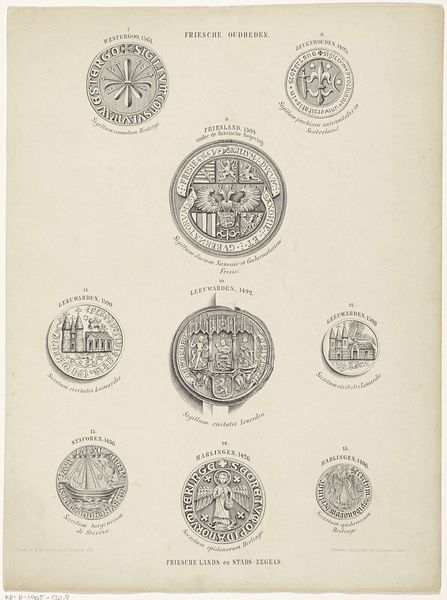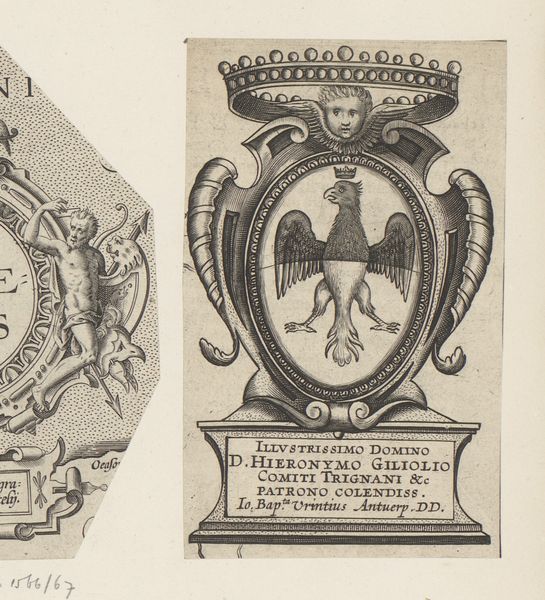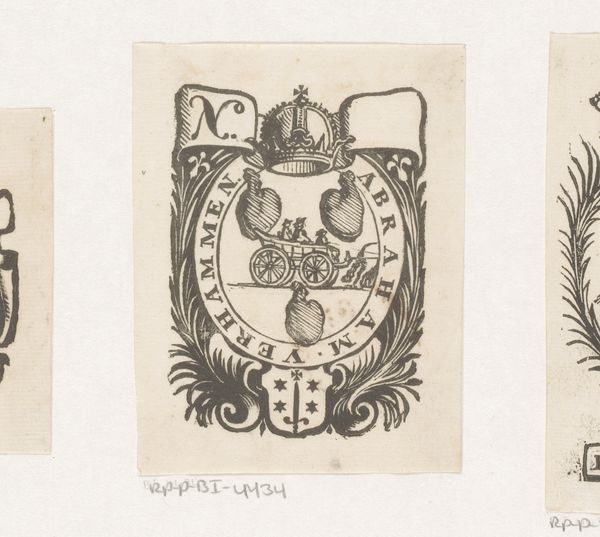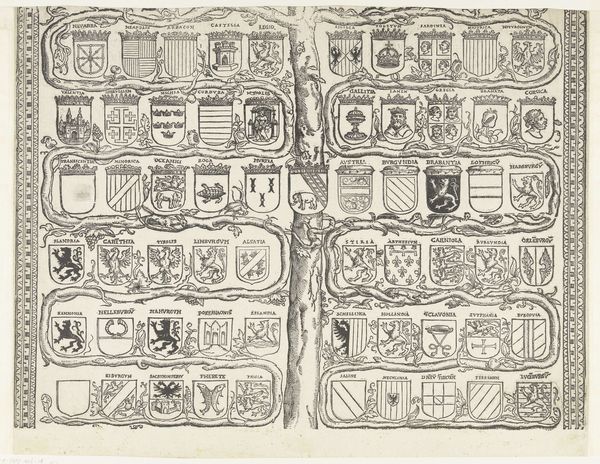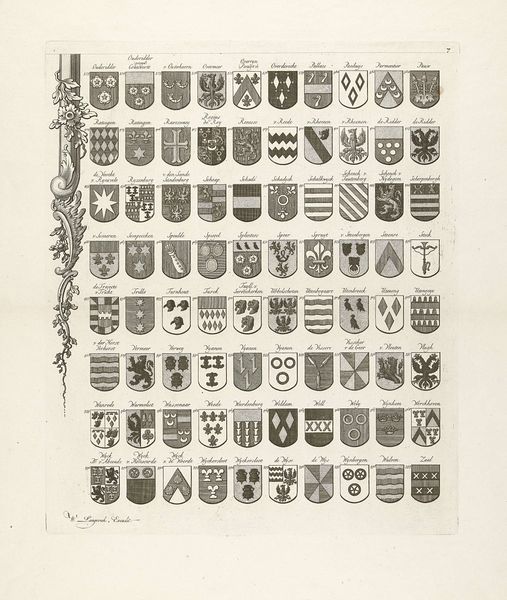
drawing, graphic-art, print, embossing, ink
#
drawing
#
graphic-art
#
comic strip sketch
#
light pencil work
#
quirky sketch
# print
#
sketch book
#
personal sketchbook
#
embossing
#
ink
#
idea generation sketch
#
sketchwork
#
geometric
#
symbolism
#
sketchbook drawing
#
storyboard and sketchbook work
#
sketchbook art
Dimensions: height 77 mm, width 138 mm
Copyright: Rijks Museum: Open Domain
Editor: So, this is "Vignet met tien schilden" (Vignette with Ten Shields), created sometime between 1836 and 1912 by Isaac Weissenbruch, currently held at the Rijksmuseum. It’s a drawing and print with embossing and ink. At first glance, it reminds me of a collection of logos or maybe inn signs. What stands out to you, especially considering the period it was made? Curator: Well, consider that the late 19th century witnessed a boom in civic identity and commercial branding. These weren’t merely logos; they’re invocations of history, trade, and local pride, often intertwined with nascent nationalistic sentiments. The shields, with their symbolic imagery – a sea horse, stars, grapes, even a character that seems drawn from mythology – reflect a deep investment in visual language to convey social standing. Look at how carefully the lettering is rendered within each shield – it’s about asserting a presence, claiming a space in a rapidly changing social and economic landscape. Do you think these symbols promoted certain political ideals as well? Editor: It’s interesting that you point out the nationalist sentiment of it, something I didn’t initially think of. Perhaps in the deliberate referencing of very Dutch iconography – things that are emblematic of their trade like fishing – a reinforcement of a common culture emerges. Were pieces like this made for widespread consumption or for a select audience? Curator: I would imagine these were most probably created for a printer’s sample book or for a small segment of the merchant population. These shields could signify specific family affiliations, guild membership, or commercial enterprises, but also served as points of recognition, signifying an increasing need to brand services. It suggests a society keen on visually classifying itself. It's a small object, yet it hints at vast societal shifts! Editor: That’s a great insight. I learned a lot about how branding and visual culture were linked to 19th-century identity!
Comments
No comments
Be the first to comment and join the conversation on the ultimate creative platform.
